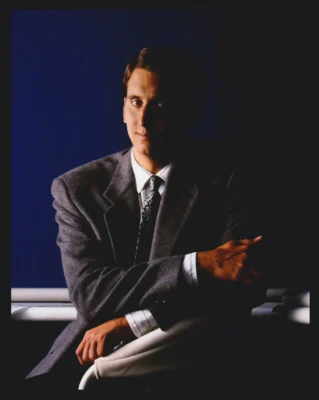Many tradeshow attendees and exhibitors rely on their own photography skills and camera knowledge to provide quality images. In fact, most people carry around cameras wherever they go.

Photo: Oscar Einzig Photography
The iPhone 4, for instance, comes with a 5 megapixel camera on the back as well as a smaller camera on the front, increasing the accessibility of photography.
At stores like Best Buy, everyday customers are encouraged to pick up the display cameras and get a feel for how easy they are to use. Many walk away from the displays believing that every photograph is this easy to make.
As the demand for these consumer-friendly cameras increases, the price decreases, making the photography market an unfortunate free-for-all. Therein lies the problem.
The sensors, lenses and physical traits of an inexpensive and lower-quality camera do not offer the parameters of control needed for professional booth photos.
“Shooting or snapping the shutter with a bracket of several frames in perfect conditions can be done in five to ten minutes,” said Robert Shiverts, director of photography for Oscar Einzig Photography. “But determining the angle of view, cleaning up or tidying the exhibit, pulling furniture out, placing flowers and literature attractively or rearranging props can take longer.”
Along with the technical capabilities to take high-quality photos is the knowledge of basic photography principles. These fundamentals include things like lighting, color and composition.
“The composition is the foundation for all great images,” said Gary Michael, president and chief imaging officer for Exposures Ltd. “Lighting and color add more graphic stimuli and strengthen the finished image. As exhibits are designed to look good to what people see, we always send out images corrected for color and lighting.”
Other compositional guidelines include the rule of thirds, creating lines and diagonals, managing depth of field, using symmetry and patterns, and paying attention to the viewpoint.

©2011 Exposures Ltd. www.exposuresltd.com
“We diminish focus on very ordinary or unattractive features of an exhibit like a neutral or plain white back wall,” said Shiverts. “Ladders are used when appropriate for scale and balance, depending on the size and height of the exhibit.”
Tradeshow photographers have also learned to adjust their practices based on who the client is and what kind of photographs they’ve requested.
“We usually photograph an assortment of overall booth photos and detail photos,” said Michaels. “Our clients use the detail shots to show specific parts of the booth that may not show as well in the overall shots.”
Another factor for photographers to consider while walking the show floor is the amount of people they’re capturing.
“Exhibit builders almost always prefer photographs without people to highlight the originality and architectural features of a booth,” said Shiverts. “Exhibiting clients generally prefer marketing images highlighting booth demos and other activity.”
Another benefit of using a professional is that exhibit photographers have learned to break the boundaries in terms of compositional structure. And some clients vary on their preference for representational and straightforward photographs, which creates room for more “artsy” and unconventional images.

“Some of the more artistic images include the creative use of partial blurred effects, silhouettes, creative use of scale with regard to products and people, selective depth of field, montages, 180-degree stitched landscape views and abstract images,” said Shiverts.
Although the definitions and basic elements of photography are laid out blatantly for everyone to practice and learn, each photographer has to make their own niche and specialty in the tradeshow market.
“We’re a boutique photography firm that specializes in delivering exhibit photos that ‘wow’ viewers with dramatic perspectives and lighting showing texture and detail,” said Michaels. “We approach each exhibit photo shoot as an opportunity to deliver a masterpiece used by the designer/builder to showcase their work.”
For other companies, the specialty is all about access and having control on the show floor.
“As the official at over 150 shows per year, we have unique access to overhead lighting control and the use of ladders,” said Shiverts. “We bring the compositional quality of advertising photos into play through staging the number of attendees and highlighting professional interaction and the visually important elements of the exhibit.”
No matter what angle a photographer chooses to take, the characteristic that speaks the most is experience. Picking up a poor-quality camera and pointing it at any random booth will not do a show floor justice.





























